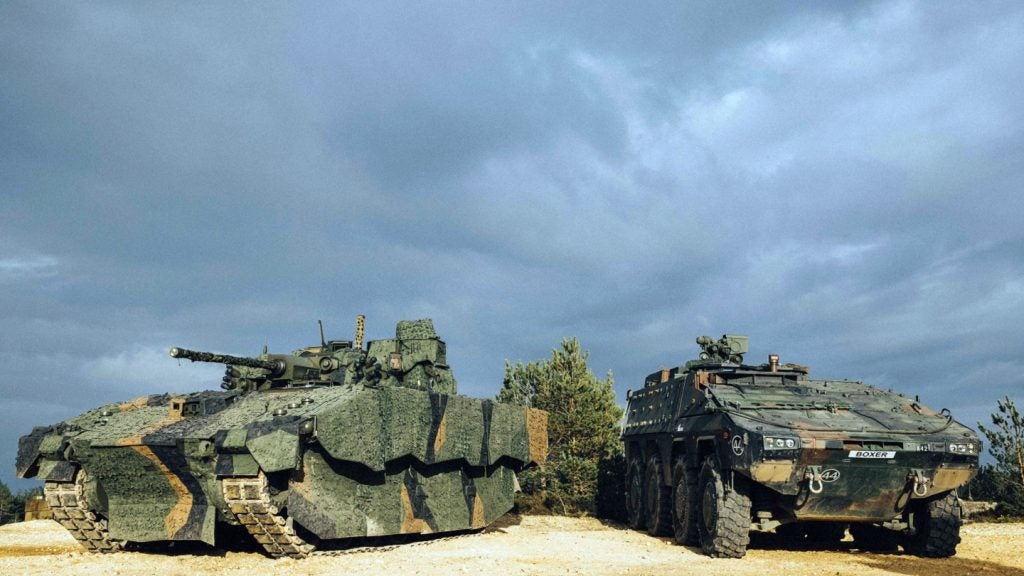
Land Electronic Warfare Evolution
The regular-adversary has developed a comprehensive electronic attack (EA) toolkit. EA aims to degrade, neutralise, or destroy enemy equipment, facilities, or personnel, and can include jamming or spoofing the enemy’s own use of the electromagnetic spectrum (EMS), as well as directed energy systems, including lasers, radio frequency weapons and particle beams.
As seen in recent conflicts, the challenge has visibly ramped up, with increasingly capable approaches deployed against military and civilian systems and personnel. By using high power equipment, an adversary could deny parts of the EMS and also target datalinks and bearers, such as the Link 16 and VHF comms which NATO forces rely on. Denial systems like these make it very difficult for sensitive electronic warfare (EW) systems to function, and can be easily deployed at the battalion level to cause significant disruption.
An alternative to such high power denial of the spectrum is to use local electronic devices, acting as ‘EW landmines’ that transmit spurious data in order to deceive and swamp an enemy’s EW system with false signals. This would also make effective direction finding (DF) far more complex. Likewise, an adversary can simply re-transmit all of the EMS traffic from the last few days, adding to the EW processing burden.
Actions by pro-Russian separatists in eastern Ukraine clearly show that deployable electronic attack capabilities exceeded NATO’s estimates. The invasion of Ukraine was preceded by extensive jamming activity to disrupt command and control operations. On a vast scale, this extended beyond military targets, to include commercial cyber and telecommunications attacks – delivering significant impact in coordination with more traditional tactics.
Russian Electronic Warfare Forces commander Maj. Gen. Yury Lastochkin has stated that his country’s electronic warfare equipment surpasses the West’s, while Lt. Gen. Ben Hodges (retired), former commander of U.S. Army units in Europe, described Russian EW capabilities in the Ukraine as “eye-watering”. Whilst actual capabilities may not live up to their hype, the contested nature of the future operating environment is not in doubt.
How well do you really know your competitors?
Access the most comprehensive Company Profiles on the market, powered by GlobalData. Save hours of research. Gain competitive edge.

Thank you!
Your download email will arrive shortly
Not ready to buy yet? Download a free sample
We are confident about the unique quality of our Company Profiles. However, we want you to make the most beneficial decision for your business, so we offer a free sample that you can download by submitting the below form
By GlobalDataFuture developments
To provide a continuous capability advantage, the EW system of the future must be able to operate in a complex, multi-domain, cross-organisation and multi-national environment, which joins EW and cyber effects in a unified capability. All of this must be achieved against a requirement for value for money, system scalability and continuity of user experience.
EW systems must therefore be easily modular and scalable, providing better coverage and reduced vulnerability to electronic and physical attack. To combat the increasingly congested EMS, the EW system of the future will have to be more selective, in order to deliver precision DF in urban environments, whilst also being resilient to deception and flooding. To cope effectively with the network noise generated by both benign civilian and military tactical communications, it will also need to be capable of processing vast amounts of data for real time analysis.
The EW systems of the future will have to obtain data from other sources, such as UAVs, to optimise intelligence, surveillance, target acquisition, and reconnaissance (ISTAR) assets – contributing more effectively to tactical and on the ground support. The increased use of smartphones and peer-to-peer technologies also necessitates a capability to deal with voice and data communication applications over cellular and WiFi networks. Future EW systems may also need to act as a cell tower for use by NATO forces, so that local civilian networks can be switched off.
The Partnership Interoperability Initiative was launched at NATO’s Wales Summit in 2014 with the intention that partners can contribute and respond more effectively to any future crisis; Achieving true interoperability between NATO partner forces would see the adoption of harmonised standards, rules, procedures and equipment. As NATO partners work to more closely align their C4ISTAR capabilities, EW will play an increasingly important role and the NATO Electronic Warfare Working Group is working to meet this challenge by defining a future roadmap of its EW capability.
Necessitating a culture shift amongst partners, close and open collaboration will be needed, with a joint focus upon a common architecture ecosystem. Alongside this, there must also be a change in the way that capability and systems are identified and procured to deliver agility to NATO operations. This must support both future anticipated need, as well as any Urgent Operational Requirement, whilst avoiding the past issues caused by legacy problems where equipment cannot be scaled to meet future requirements.
Changing battlespace
Western allies are now turning their attention from counter-insurgency, which dealt with the demands in Iraq and Afghanistan, to advancing Signals Intelligence and EW capabilities in order to deal with a near-peer and hybrid adversary where EMS dominance and the freedom to manoeuvre within it will play an increasingly significant role.
Though NATO is investing in EW in terms of adversary and training capability, there will always be a need for operational EW, including EA effects such as denial and spoofing, along with the emergent techniques of tactical cyber-attack. Indeed, denying freedom of manoeuvre in the EMS remains the most effective method for an adversary.
Effective EW development will therefore cover both traditional tactical military systems, as well as mobile and internet infrastructure, with a requirement for greater interoperability, precision, sensitivity, agility and processing capabilities, alongside a resilience to a directed high energy disruption.





